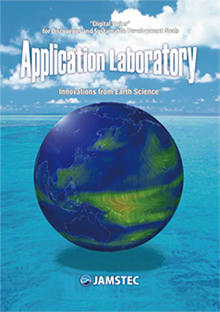Climate Variability Prediction and Application Research Group (CVPARG)
We perform climate predictions at leads times of 1 to 24 months to investigate the predictability of the climate system and to explore ways of putting climate information to practical use.
Climate variability like El Niño in the tropical Pacific, and the Indian Ocean Dipole in the tropical Indian Ocean, crucially rely on coupled air-sea feedbacks. Mostly through atmospheric teleconnections, this tropical variability influences climate in many regions of the world. Research activities at CVPARG have aimed to improve scientific understanding of the physical mechanisms underlying these climate phenomena and, in the course of these activities, we have developed a coupled ocean-atmosphere model in collaboration with the European Union. When fed with data of the current state of the atmosphere and ocean, the model is able to predict the future evolution of the coupled system and can, for example, forecast El Niño events one year in advance with relatively high accuracy.
In addition to verifying these experimental predictions, CVPARG researchers explore ways of improving forecast accuracy and to broaden the scope of forecast applications. CVPARG researchers study not only tropical phenomena like El Niño, but also phenomena like the so-called “coastal Niño”, which occurs along the eastern boundaries of subtropical oceans and bears some resemblance to El Niño. Another research endeavor targets air sea-interaction in the midlatitudes, a good example of which can be found to the east of Japan along the Kuroshio current. By deepening our understanding of these climate variations, we hope to improve the accuracy of our predictions not only in the deep tropics but in many regions of the world.
In terms of societal applications, CVPARG is striving to convey forecast information to the general public in an easily understandable format and exploring novel ways of putting forecast information to practical use. Predicting midlatitude variability, which dominates countries like Japan, requires running the model prediction not just once but many times over (so called ensemble forecasts). This results in vast data sets that require the development of new methods for data processing and utilization, which is another endeavor of CVPARG. Examples of societal applications of the forecast data include a project funded by the Japanese Ministry of the Environment that aims to determine the impact of oceanic climate variations on crop yields and other produce. Another example is a collaborative project with the Institute of Tropical Medicine at Nagasaki University, in which we attempt to develop an early warning system for infectious diseases in southern Africa.
By providing experimental seasonal predictions and by developing novel societal applications we can receive feedback about the usefulness and accuracy of our forecast information. Based on this feedback, we will continue to advance our research to provide society with the most helpful forecast information.
April 3, 2017
Masami Nonaka
Group Leader, CVPARG








